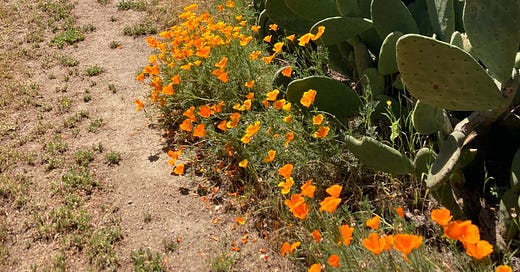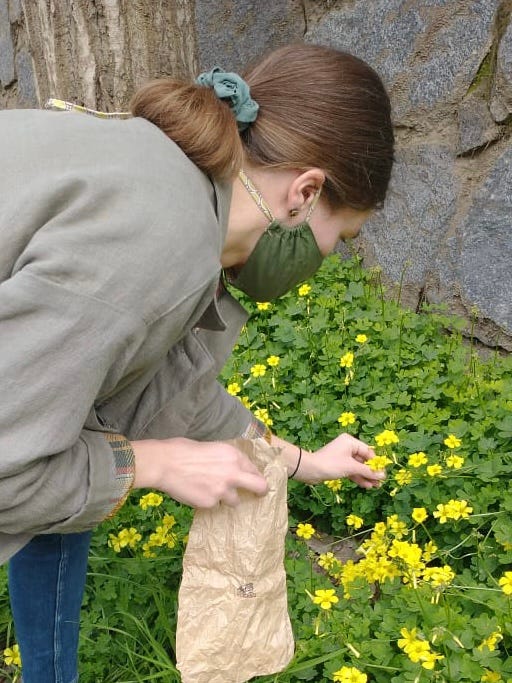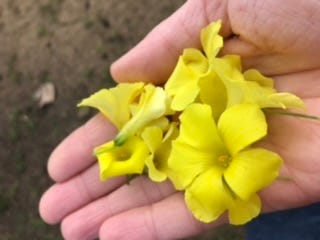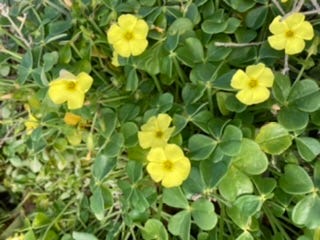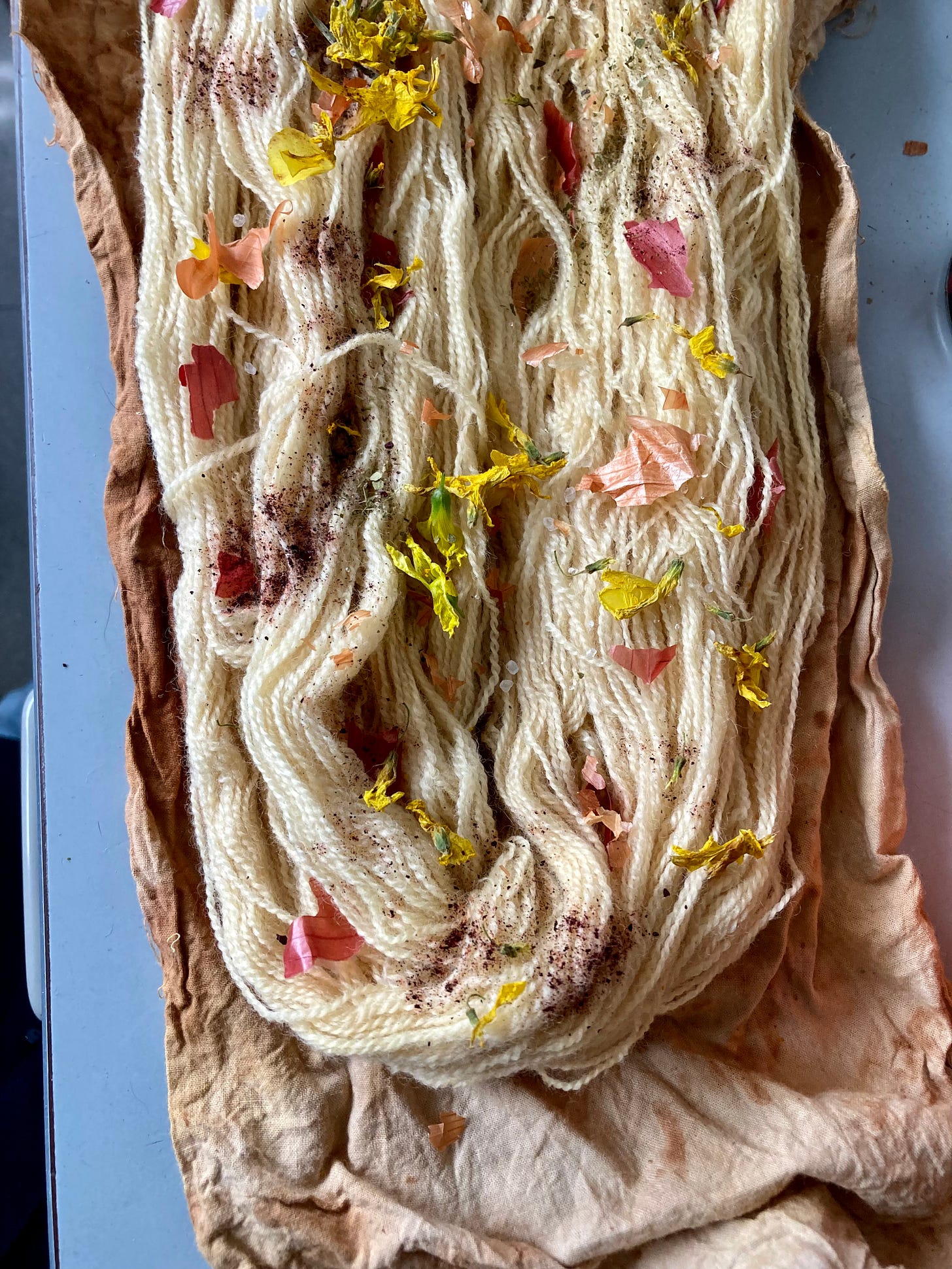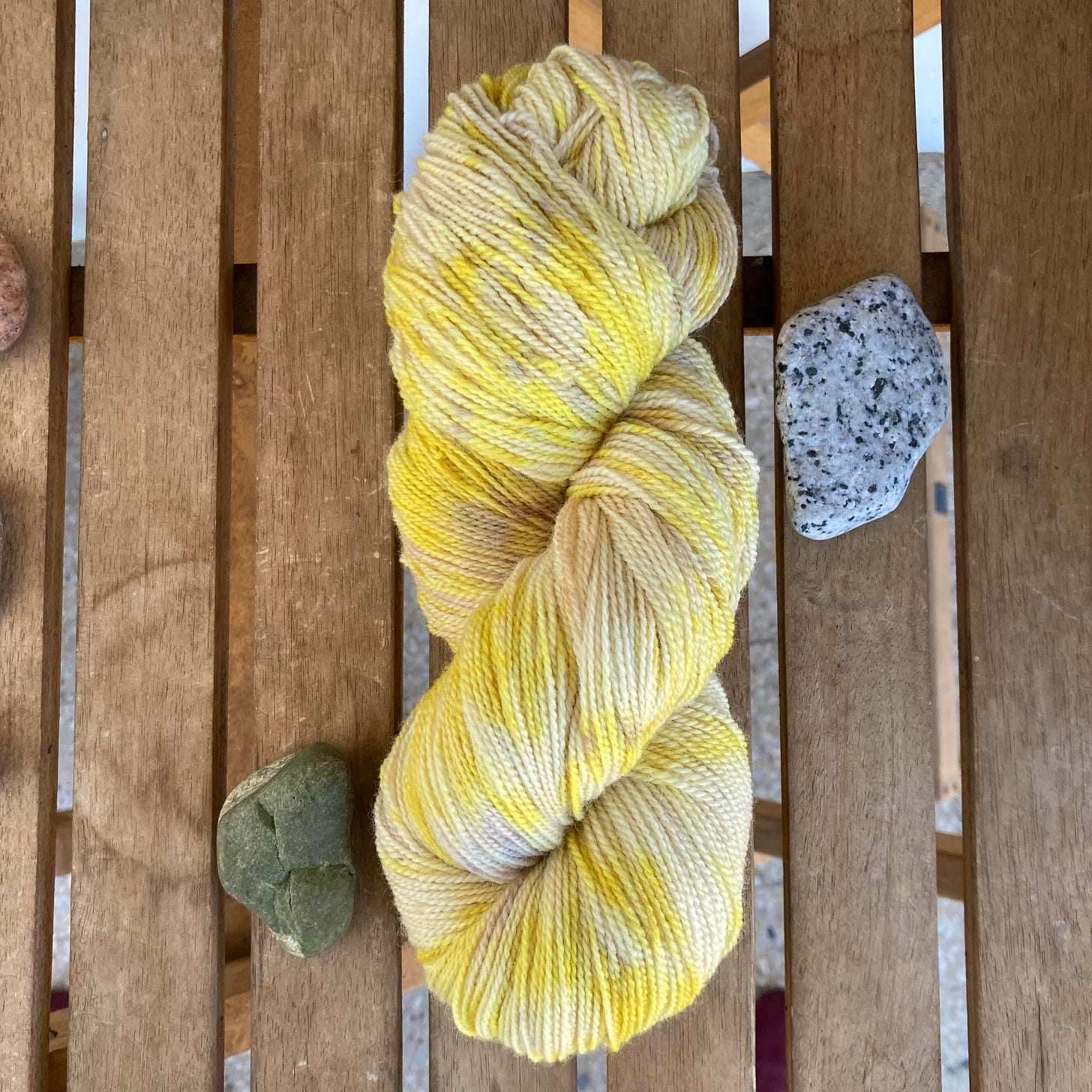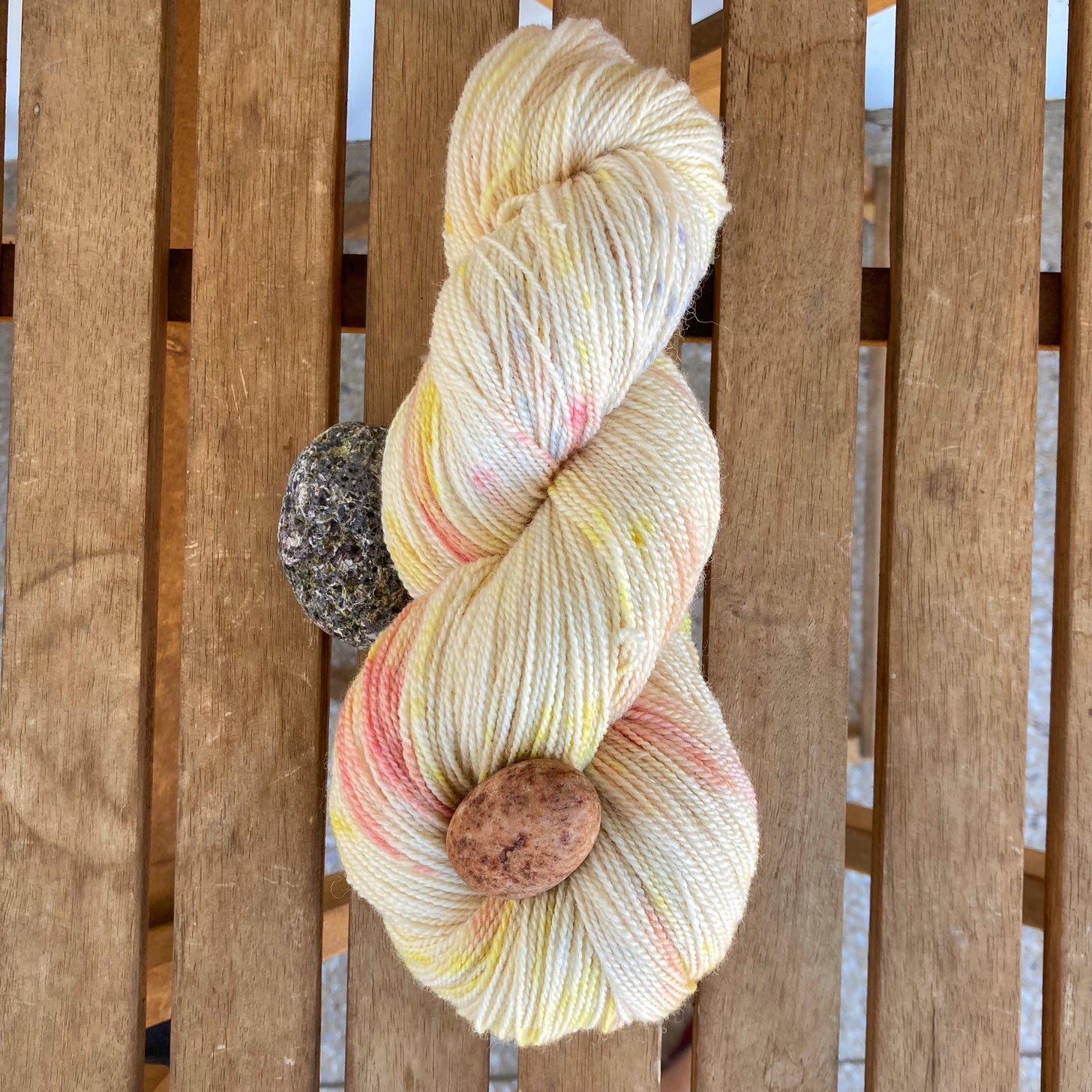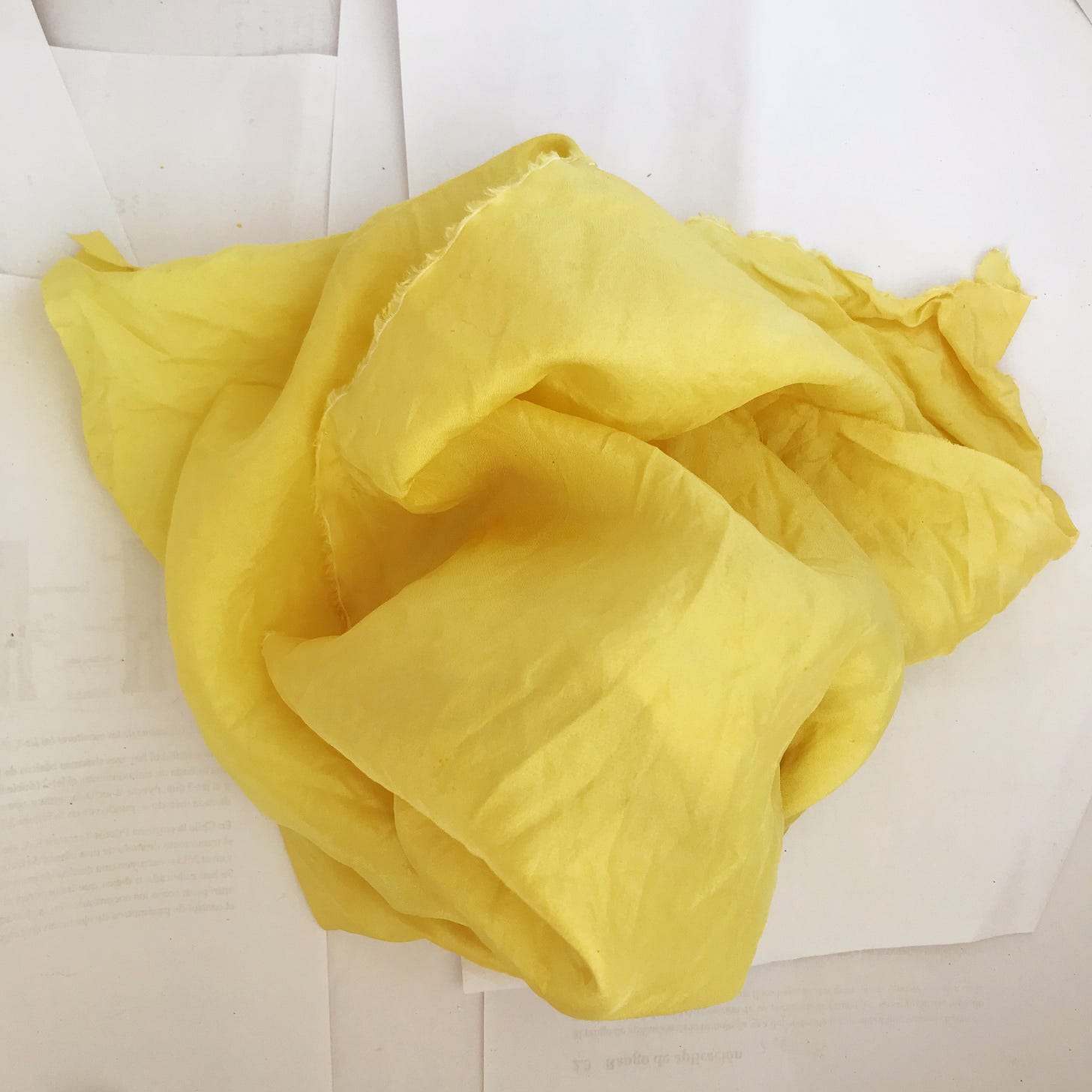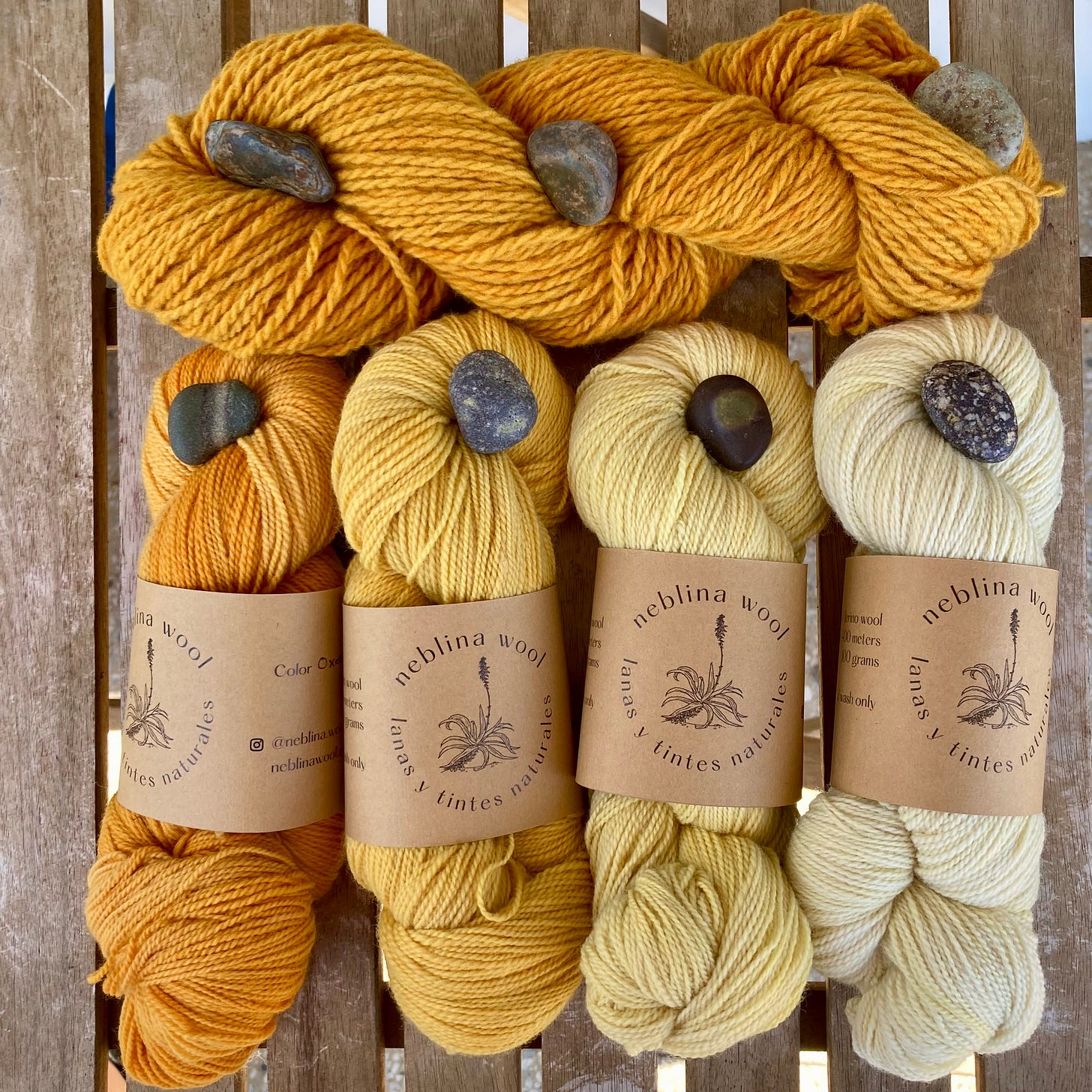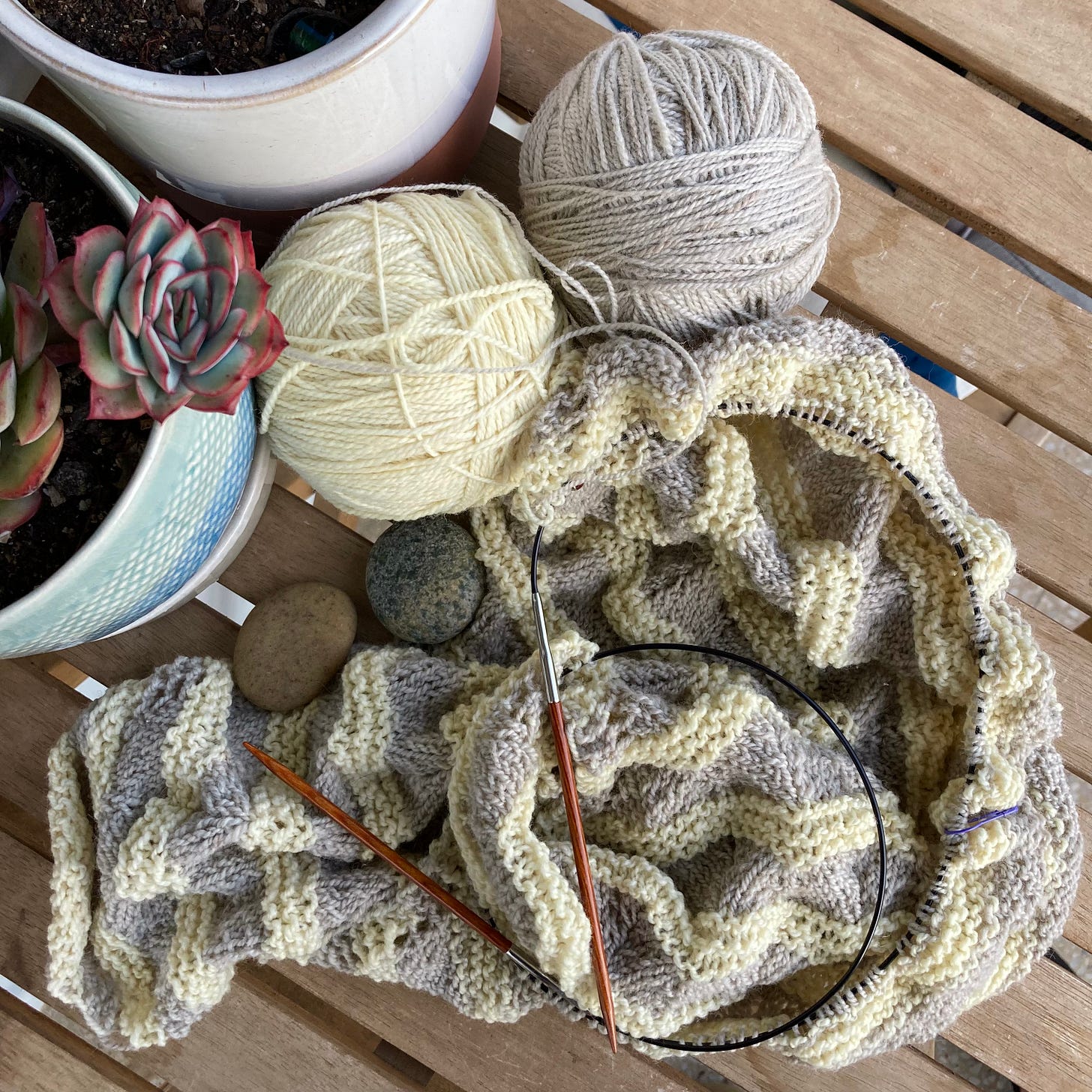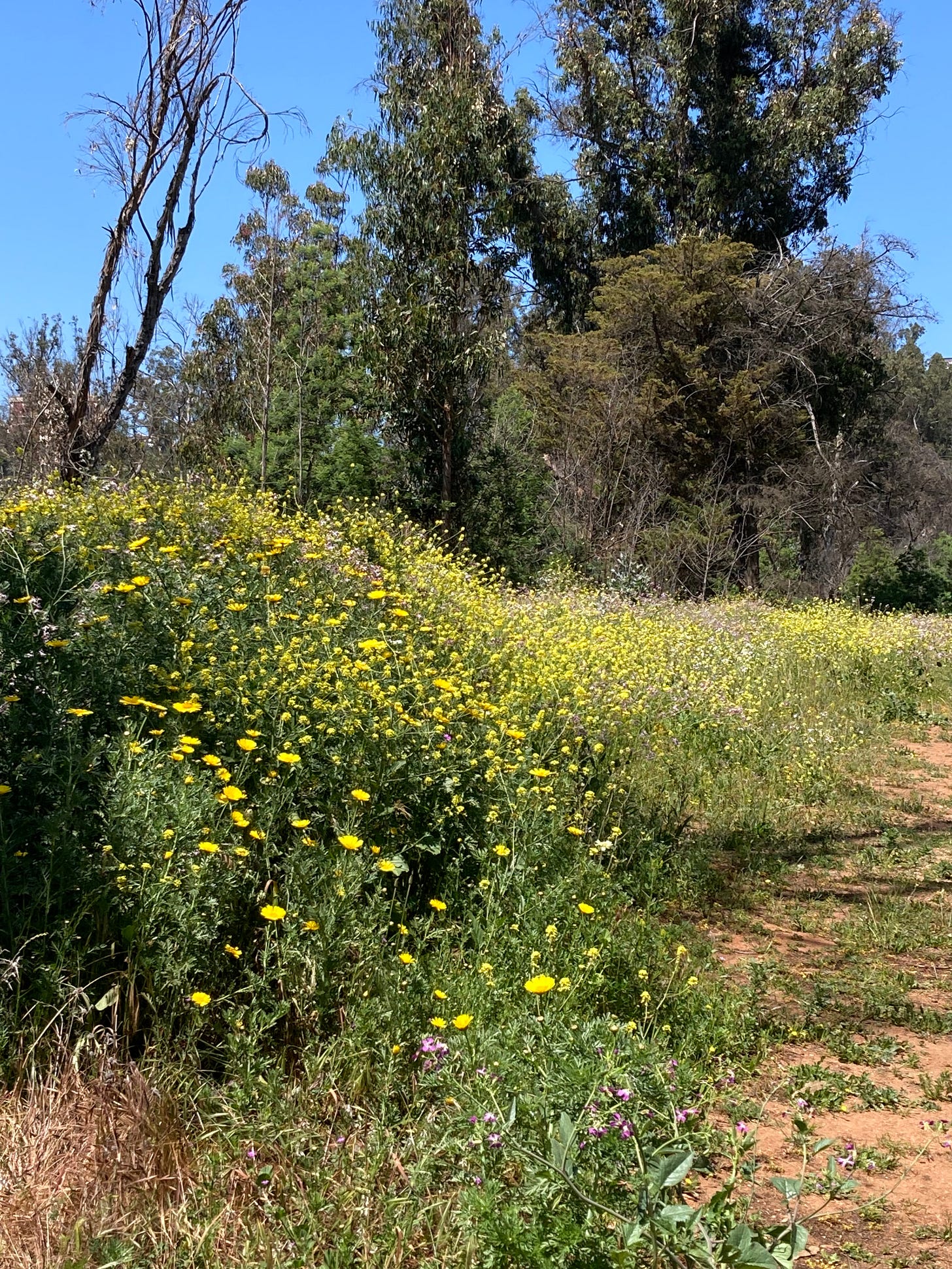Spring in central Chile is magical. While summers here are very dry, especially in recent years, in spring wildflowers spring up everywhere thanks to winter rains. This year we had the rainiest winter we’ve seen in several years, and wildflower season has been spectacular. This has given me the opportunity to collect some flowers and reveal seasonal color.
Oxalis is a wildflower I anticipate anxiously all year. Starting in August, I walk through all my foraging routes looking for that particular flash of neon yellow. This year, the rain gave us an abundance of wildflowers, so I was able to forage more than in past years. As with all foraged dye plants, and wildflowers especially, it’s important to practice responsible foraging. I take only a few flowers from each location I find them, leaving plenty behind for pollinators that need them. I take only what I need and know I can use, and take care to leave foraging areas as undisturbed as possible, or even clean them up a little when I can. As a natural dyer, I want my relationship with plants to be reciprocal: I’m grateful to them for sharing their color with me, and I try to give back by offering them a clean environment and not over-foraging.
This means that the foraging process is extensive! It involves long walks and building up my supply over the entire season. A slow, respectful process is fundamental to my natural dye practice.
Because the supply is small, I mainly use Oxalis flowers in bundle dyeing. They offer highlights of bright, almost fluorescent yellow that look incredible in speckled yarn. I haven’t noticed much of a difference between fresh and dried flowers, so I will sometimes dry them and store them for later use. Due to my own space constraints, I don’t keep them more than a few months.
In rainy years when Oxalis flowers are more abundant, I’ve also experimented with Oxalis dye baths, although always in small batches. In 2020, I used Oxalis to dye silk.
Thanks to information from The Dogwoold Dyer’s subscription service (truly an incredible resource!) I’ve learned more about the dye compounds in Oxalis flowers, which indicate strong levels of stability and colorfastness, as well as it’s pH sensitivity which allows for a wider range of color with pH modifiers. So this year, I made a small dye bath of Oxalis and experimented a bit with the pH level. First I extracted dye from 32g of mostly dried (and a few fresh) Oxalis, mostly flowers but I did include a few stems. I recorded the pH of the initial dye bath, using tap water, at 5.8. While my tap water has a neutral pH, the flowers contain oxalic acid that naturally lower the pH a bit. I used wool mordanted with alum, which also increases acidity. Since wool prefers an acidic environment it was the perfect material to use here. This slightly acidic oxalis dye bath produced a bright orange on this 100g skein of Merino wool.
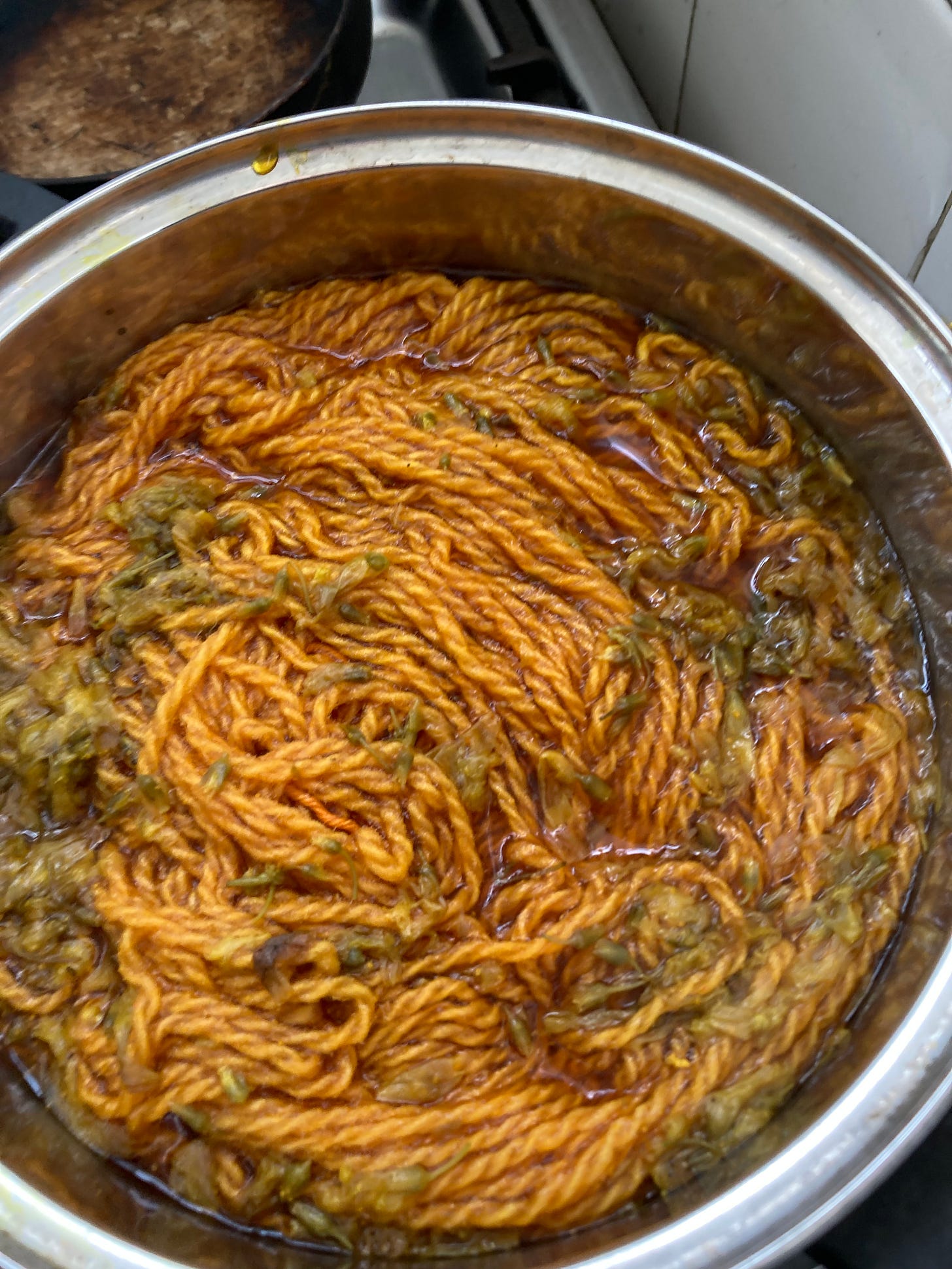
After dyeing this skein I noticed my dye bath still had a lot of color in it so I kept going. The next result was also orange. After that, I added a bit of citric acid to lower the pH to 4.2. The next skein came out yellow. I kept going until the dye bath was exhausted, ending with four skeins with just the slightest hint of bright yellow.
Oxalis season is winding down now, although other wildflowers are still going strong. I still have a small supply left to use in bundle dyeing, but I’ll have to wait until next year to have another chance at producing these stunning yellows and oranges. In the meantime, I, along with the other knitters who picked up Oxalis-dyed yarn at my recent shows, can enjoy the beautiful color nature has shared with us thanks to a rainy winter and an abundant spring.
Thanks for reading! Here’s where you can find more about Neblina Wool online:
This newsletter will be back next month with another deep dive on one dye material. You can subscribe to receive this newsletter in your inbox.
My website isn’t up to date yet following my recent shows in Santiago, but I’ll be uploading new colors as soon as I can.
In the meantime, you can follow me on Instagram to see the latest updates and message me there if you see something you’d like to buy.
Follow me on Pinterest, where I’m cataloguing all of my natural colors, including ones which have sold out, as well as other dye experiments and natural color inspiration from places I’ve visited.
Follow me @neblina on the Making app for more casual day-to-day photos of dyeing, knitting, sewing, and other crafting.

